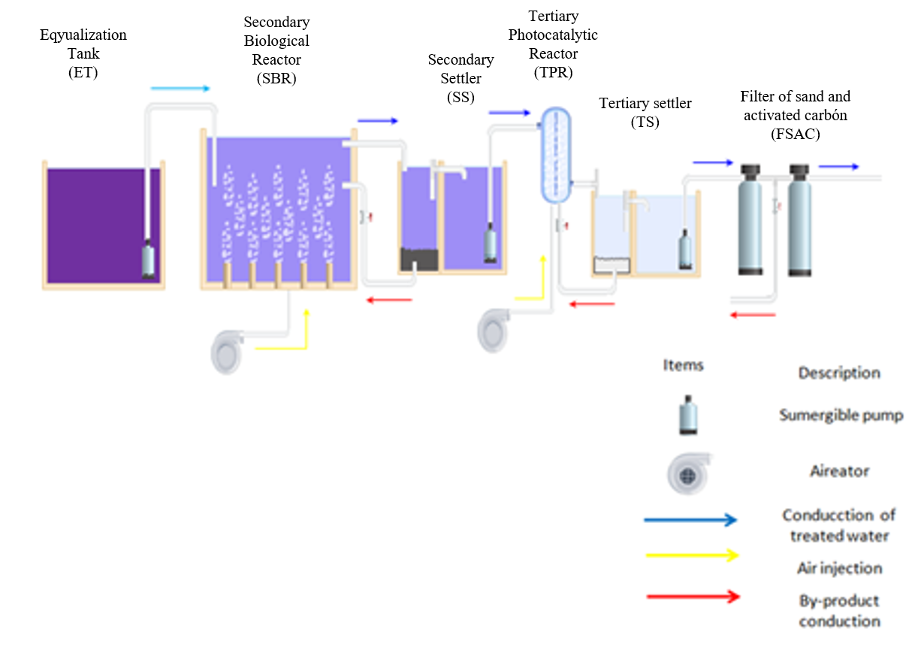 |
|
The dyes and chemical additives, present in the wastewater produced in the teaching laboratories of Microbiology, generate high contamination, are difficult to degrade and according with the Colombian regulation should be treated before final disposing. In this article, a pilot plant was used to treat a synthetic wastewater (SWW) containing a mixture of dyes. Initially, the capacity of a fungal/bacterial sludge to remove this type of contaminants on a 1L scale was determined. Subsequently, the operating conditions that favor tertiary treatment were selected by using TiO2/UV photocatalysis and finally the complete treatment plant was integrated and evaluated (Pre-treatment, secondary treatment and tertiary treatment). The SWW that entered the plant had the following characteristics: Chemical Oxygen Demand (COD): 4033 mg/L, Biochemical Oxygen Demand (BOD5): 2750 mg/L, Unit Color (UC): 2010, BOD5/COD ratio: 0.68 and a pH of 7.0. At 37 hours of plant operation, overall removals were 98 ± 3 %, 99 ± 6 % and 99 ± 8 %, for COD, BOD5 and UC. Proving that the integration of unitary operations in a sequential and orderly manner, are a novel alternative for the treatment of this type of wastewater.
Keywords: Synthetic wastewater, Pilot plant, Pre-treatment, Secondary Biological treatment, Tertiary Photocatalytic Treatment.
|
|
 |

